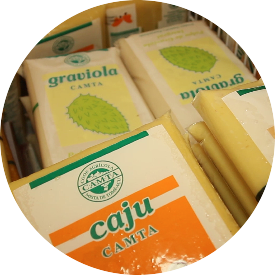Travel through Brazilian cooperativism



At 208 kilometers from the capital Belém, there is a cooperative, which history is linked with the 1930s Japanese immigration. The Tomé-Açu Mixed Agricultural Cooperative, installed in a municipal of the same name, was founded in 1949, gathering Nikkeis farmers.
Camta in a few period of time became the world's biggest black pepper producer. After having a serious plague problem the cooperative decided that more rentable safe to cultivate others sorts too, like cacao, açaí, cupuaçu and other kinds of tropical fruits. The diversified cultivation and the agroforestry are good for the maintenance of a fertile ground and the roll ecosystem.
The Camta keeps an industrialization fruits process for the production of fruit pulp to supply, the national and international, markets. In addition to its 132 people affiliated, the cooperative receives fruits from more one thousand producers, who make part of the program, and negotiates four thousand and five hundred tons of fruit pulp, seven hundred tones are of pepper, and six hundred are of cacao. The experience acquired all over many years of Camta, developed sustainable cultivating practices, always thinking conservation points.
Camta
Brazilian Cooperative System
Cooperative System of Distrito Federal
